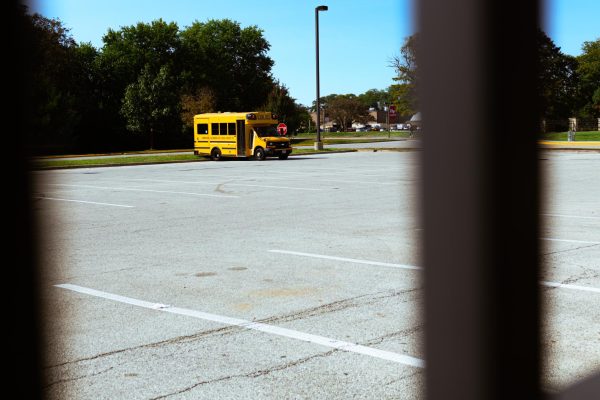Print isn’t dead. It’s just ‘shifting’
As the global reach of digital media continues to grow, newspaper circulation continues to decline as the years go by.
According to Pew Research Center, daily newspaper circulation in the U.S. was 28.6 million for weekdays and 30.8 million for Sundays, this is down eight and nine percent, respectively, from 2017.
In fact, the Voyager is going through its own struggles. In the past, 2,000 newspapers per issue were ordered. Now, this number is down to 1,500 newspapers per issue.
Enrollment has even dropped for Journalism 1, which, in the past, had two full classes. Because of this, there was competition to be on the Voyager staff. However, there is currently only one Journalism 1 class and the Voyager is shrinking in numbers .
For hundreds of years, newspapers were the primary way to get information. They broke massive headlines and kept Americans up to date on national and international news.
However, the creation of the radio and television in the mid-20th century served as a catalyst in the decline of the newspaper industry, but this change was slow. As the internet became more popular the industry took a big hit.
“[People] have more access points to information. Obviously technology has changed things, and social platforms like Facebook and Google have become our de-facto editorial bosses,” New York Times political reporter Astead Herndon said. “However, people still have a hunger for news, and it’s our job to find it to them.”
Mary Mitchell, a Chicago Sun Times columnist and journalist for 30 years, said the newsroom is a different place than when she first started her career.
“I entered the newsroom nearly 30 years ago. At that time the newsroom was a robust, open space, where editors still shouted across the room with a factoid, and phones rang loudly from morning to late in the evening,” Mitchell said. “Today, of course, everyone communicates via email or on media platforms. Where most tips once came by way of a clandestine phone call, now reporters often troll Facebook pages, Instagram and other media platforms to mine their stories.”
The decline in newspaper circulation has caused layoffs and for many publications to close, making the journalism field an even harder profession to enter.
“The most significant change is the downsizing of reporters that has occurred over the past three decades. Media companies that once dominated the industry are now struggling to stay afloat because of disappearing advertising dollars…Unfortunately, a lot of smaller, community newspapers have disappeared. Now we see more independent websites with on-line only content replacing print journalism,” Mitchell said.
The top newspapers in the U.S. have turned their focus more and more to digital circulation and have had great results. In fact, digital circulation for the New York Times increased 27 percent and 23 percent for the Wall Street Journal in 2017.
However, newspapers have had to publish stories faster than ever because of competition from other media outlets, the biggest being television, the most popular platform for news consumption.
“In today’s days and age everybody wants a quick fix,” VTV sponsor Mark Ciesielski said. “So instead of having to sit down and actually do the reading themselves, they prefer to go to a news source and hear the news in 20 seconds. So, I think the competition is out there between the two [television and newspapers] on a daily basis.”
Despite this, some local newspapers, like the Homewood-Flossmoor Chronicle, provide community members with their own source for news.
Originally created in June 2014 as an online publication, the Chronicle began its monthly print publication in Dec. 2015.
“While most people these days regularly use digital devices and can easily get news online, people in middle age and beyond also grew up with print and many still appreciate the medium. We got requests from many readers for a print product,” Eric Crump, an editor for the Chronicle said.
The creation of a print newspaper was meant to serve community members who weren’t as familiar with social media.
“We encountered long-time residents who did not know there was a local newspaper because they are not as thoroughly immersed in social media as younger people typically are. Our goal is to serve the whole community, so we needed to use all the tools that help us reach all our people,” Crump said.
He also said print isn’t necessarily dead, it’s role is just “shifting.”
“According to Statistica, 695 million books were sold in the U.S. in 2018. That’s not the peak, but the number has been increasing each year since 2012,” Crump said. “Humans rarely throw away any technology that continues to be useful and desirable. Print is still in the game.”
Despite newspaper circulation declining, many view journalism as “more important than ever,” especially with today’s political climate.
“Aspiring journalists should be on top of current events, and that means reading trusted media sources,” Mitchell said. “…But most of all, aspiring journalists must have a genuine curiosity about how the world works and why.”





